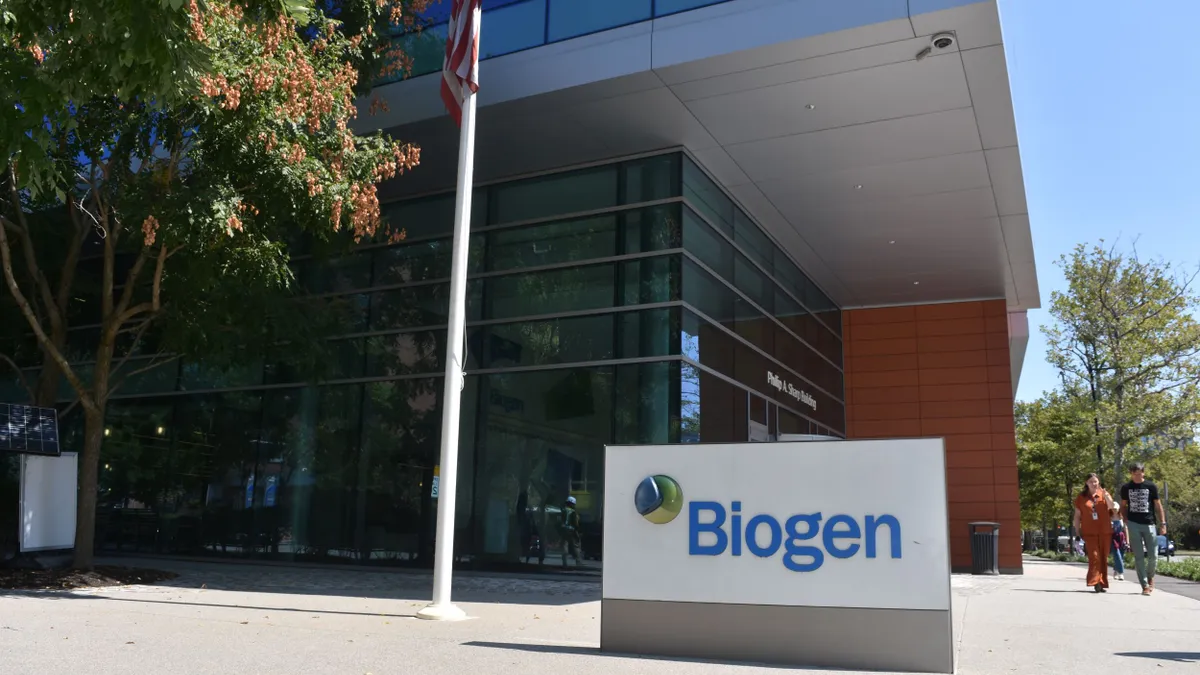Gregory Bell, chief medical officer at Attralus, is striving to turn what is currently a hope for a cure into a reality for patients with the rare disorder systemic amyloidosis. The company is in the mid-stages of developing an imaging agent to pinpoint diagnosis, and in the early stage of development for treatments that are intended to reverse the disease. It was this promise that brought Bell to join Attralus in 2020.
“These are very serious life-threatening and often fatal diseases,” Bell says. “There's a number of different causes to these diseases, and it is difficult to diagnose, but it is a solvable problem.”
Systemic amyloidosis is a group of rare disorders that are estimated to affect around 100,000-125,000 people a year in the U.S., although most go undiagnosed. Amyloidosis occurs when misfolded protein, called amyloid, deposits in organs, such as heart, kidneys, nerves and liver, and interferes with their normal function. There are about 17 different systemic amyloid diseases, of which AL and ATTR are the most common.
According to a description by NORD, AL amyloidosis (immunoglobulin light chain, historically known as primary) is the most common type of systemic amyloidosis, followed by ATTR amyloidosis, AA amyloidosis and ABM2 dialysis-related beta2-microglobulin amyloidosis. The Amyloidosis Foundation reports there are around 4,500 new cases diagnosed in the U.S. every year.
The survival rate for a person diagnosed with AL amyloidosis is typically three to five years, but can be as little as five months or as much as a decade or more. According to a study published by the National Institutes of Health, survival rates continually improve for patients at all stages due to advancements in light chain-reducing therapies.
Aiming for the bullseye
Bell is optimistic that there is a way to not only treat the disease, but to cure it.
For example, the AL form of amyloid has been commonly treated with autologous stem cell transplant or chemotherapy in combination with targeted therapies. Chemotherapy can dramatically reduce the level of the light chain protein causing the disease, which allows for organ improvement and prolonged survival. While existing treatments for systemic amyloidosis reduce new amyloid formation and slow progression, they do not remove existing toxic amyloid fibril deposits. However, early preclinical data points to the potential of Attralus PAR therapeutics to specifically bind to and remove toxic amyloid fibrils, Attralus reports.
“We know in some AL patients, who achieve a complete hematologic response, particularly in patients who receive a stem cell transplant, the amyloid can regress over years,” Bell says. “And when it does, we expect the heart to go from being dysfunctional to a return toward normal functioning.”
Attralus is formulating newer approaches to reduce amyloid deposits that could be used alone or in combination with chemotherapy for treatment.
"Our goal at Attralus is to develop drugs that make the process of disease regression happen faster by directly targeting the amyloid for removal by the immune system,” Bell says. “There's an opportunity here to not simply slow down disease progression, but to actually reverse the disease and return patients to a normal age-appropriate lifespan."
Improving diagnosis
Like many rare diseases, AL amyloidosis is difficult to detect, and patients can wait years for a correct diagnosis. Because it can’t be detected by X-ray or ultrasound, a biopsy is often performed on the organ to identify the presence of amyloidosis. The disease is frequently misdiagnosed, and according to Bell, up to 80% of patients with systemic amyloidosis may remain undiagnosed.
To improve diagnosis — and thus, the prognosis — of the disease, Attralus has developed a solution that the company plans to advance to phase 3 trials. Currently, there are no approved diagnostic imaging agents in the U.S. specific to systemic amyloidosis.
“We are developing a diagnostic that will improve the ability to detect disease in patients and potentially monitor response to therapy, so we can see if our treatments are doing exactly what we want them to do,” Bell says.
Attralus’ imaging agent can detect amyloidosis, similar to how a PET scan detects cancer. The peptide radioisotope agent, AT-01, is injected in the patient and a PET CT scan is performed. The agent binds to any amyloid in the body and if present, shows up clearly on the images taken.
So far, AT-01 has been evaluated in a phase 1/2 trial that enrolled 25 patients with systemic AL amyloidosis, 20 patients with ATTR amyloidosis, five patients with other forms of systemic amyloidosis and five healthy patients. AT-01 uptake was commonly seen in organs most frequently associated with amyloid, such as the heart, kidney, liver and spleen.
“Our plan is to speak with the FDA this year. We want to conduct a pivotal trial so we can get AT-01 approved for use as a diagnostic,” he says. “If the regulators agree with our plan, we hope to be in market as early as two, maybe three years. Furthermore, we are also looking to partner AT-01 in order to make it available sooner.”
This test could greatly aid physicians in their diagnostic evaluation for systemic amyloidosis disease and may allow for monitoring response to treatments.
“A more specific diagnostic will really help clinicians identify patients earlier in their disease process when there’s the best opportunity to stop the disease,” Bell says.
Closing the gap in amyloidosis care
Attralus has a portfolio of therapeutic candidates designed to opsonize amyloid and trigger the immune system to clean it out of the organs. The first candidate to enter the clinic, AT-03, is a pan-amyloid removal therapeutic intended to potently bind human AL and ATTR amyloid extracts and is capable of binding diverse forms of systemic amyloid deposits in mouse models of the disease.
“We want to see where that protein binds in patients with known amyloidosis,” Bell says. “Does it get to the organs and bind to amyloid the way we expect it to? We think it's valuable to be able to characterize that especially with our AT-03 molecule.”
There are other companies that have developed and gained FDA approval for amyloidosis treatments, including Alnylam’s Onpattro, Pfizer’s Vyndaqel and Akcea’s Tegsedi.
However, Bell says Attralus is the only therapeutic company in this space with a unique diagnostic that is intended to help with patient selection in clinical studies, and holds the promise to follow patients over time and assess responses to therapy. This could close a major gap in amyloidosis patients’ care.
“We currently don't have the ability to monitor patients to see how they improve or how their amyloid burden changes over time, so with regulatory approval, this will be an important advance for the field,” Bell says.
The other bonus behind Attralus’ therapies under development is that they are focused on amyloid removal and designed to be used for all types and all stages of systemic amyloidosis. All of Attralus’ therapeutic candidates are monoclonal antibodies or monoclonal antibody-like proteins that bind to all forms of amyloid.
“We’re not developing a therapeutic for only light chain or ATTR amyloidosis,” he says. “There are 17 different proteins our therapeutics bind to, creating a pan-amyloid approach to therapy.”
Bell says this therapy approach is also unique because it works by activating the immune system to phagocytosis and remove the amyloid — something he believes no other therapy currently does.
“Everyone at Attralus is very excited about this opportunity, as it could potentially be a chance to turn this disease around,” he says.





















